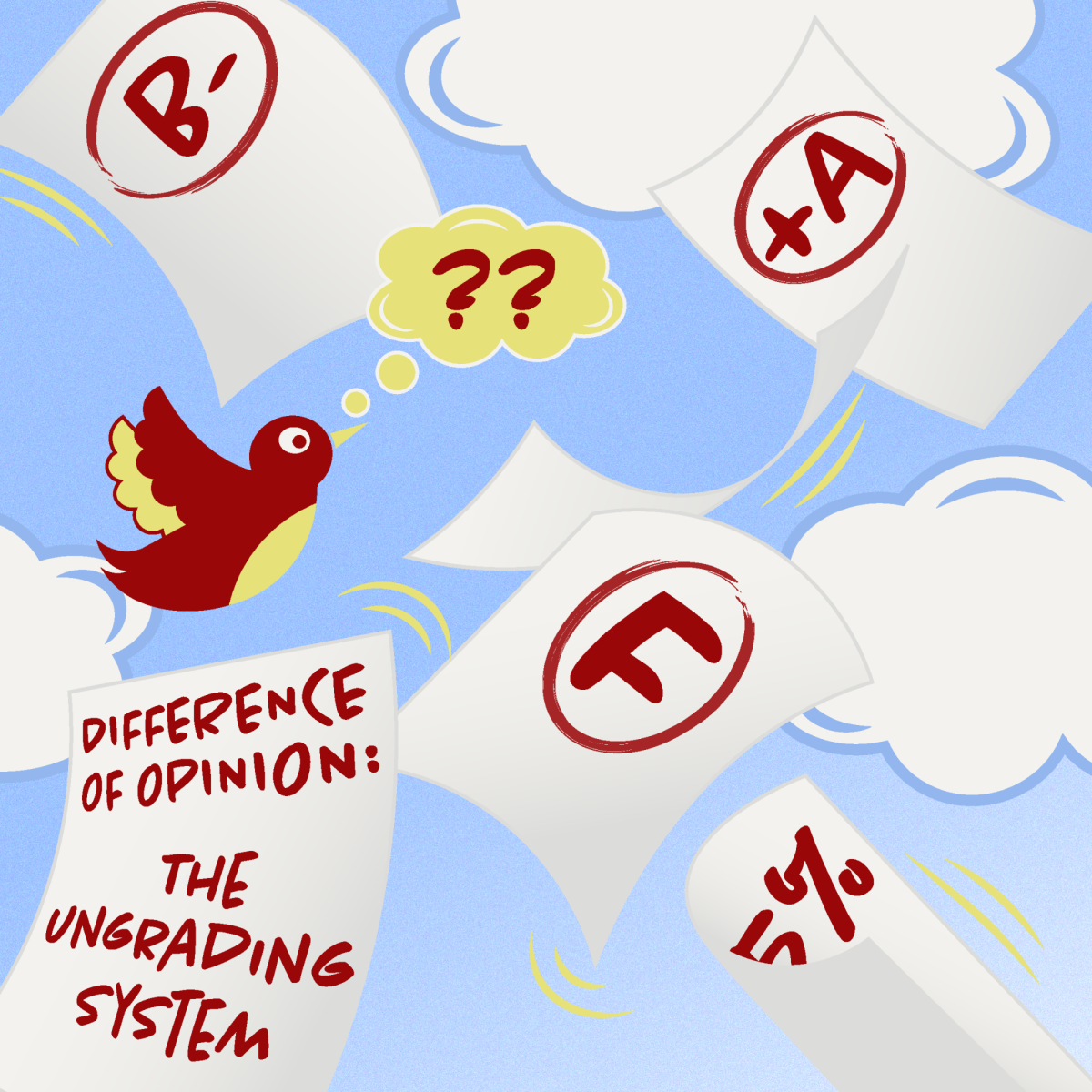Grades are a vital part of the college experience
Leah Boone
Recently, more classes and universities have begun to lean toward an “ungrading” policy, which takes a large amount of focus away from grades and more on growth. While there are some inherent advantages to this new system, such as the alleviation of anxiety and performance-based worth, it is an overall flawed system that will ultimately cause more issues than resolutions.
Right off the bat, one needs to consider the society in which one lives — especially in the U.S. where there is a large focus on competition and success. Studies have shown graduates with better grades have come out on top in the job market more often than not.
Imagine you are an employer and got a brand new batch of applications from college graduates, only to see each and every one of them doesn’t have a single grade to report. At first glance, this may not appear to be a big deal, or maybe even seem like it evens out the playing field. However, this is not the case.
On average, only 20% of applicants receive an interview for any one job. One way employers weed out less qualified applicants is through GPA; without surefire grades to create said average, this can make the hiring process even more difficult, which could lead to the job hunt being more excruciating than it already is.
This can be applied to continuing education after one’s undergraduate studies are complete. Graduate schools pay a fair amount of attention to a student’s GPA and grades in specific courses, and it may be a dealbreaker right off the bat if they do not have a concrete grasp on someone’s performance in class.
Additionally, the practice of ungrading can end up introducing bias within the classroom — an issue that does not need to become any more prevalent. In an ungrading system, the “grades” are often peer review, self assessment and contact grading. Another common tactic is for the professor to receive a portfolio of the student’s work in order to give a final grade.
The ungrading system can easily introduce implicit bias, which can give some students an unfair advantage in their grades. Oftentimes, student’s work is graded with a range of harshness, with minorities often falling victim to the harshest of grading.
When a professor is responsible for giving students an all-encompassing grade at the end of a course without a statistical average to do it for them, it can result in an inequity within the distribution of grades. In a course where all assignments are graded on a point system and the final grade is an average of these, it is easier to avoid this bias.
Ungrading could be more beneficial in certain situations, but it should not become normalized. For this to truly work, the entire system that relies on grades, GPA and school performance would have to be rewritten.
Learning for the sake of learning
Lily Seymour
Educational experiences differ widely, but there is one systematic anchor that defines the majority of them: teacher assigns assignment, student completes it and gets feedback in the form of a number or letter, sometimes with comments tacked on to the end. The field of academia, like all others, is constantly evolving and recently there has been a controversial idea surfacing more and more: ungrading.
Ungrading is the process of minimizing the importance of letters or points used in courses, while shifting the focus on thorough and frequent feedback. This feedback is based on course standards and goals in order to gain how they are progressing in the course. The purpose of this system is to place emphasis on growth and learning for comprehension and application without letting letter grades or points distract from that.
The vagueness and unconventionality of this approach can often scare people away but there is a time and place for it. The traditional grading system is important in certain settings but can lead to unnecessary stress. Ungrading can help restore some joy in school and learning the conventional system seems to stifle.
Ungrading can produce more creativity, excitement, agency and engagement about learning itself. However, it sometimes can lead to more stress due to unknown systems and factors. Ungrading does not mean there is no structure. It means it is a different system. As long as that is communicated and implemented clearly, it can lead to success.
Ungrading can take various forms. Sometimes it uses student-created rubrics to grade an assignment, or both the student and teacher grade an assignment and come to a compromise on the quality of the final product.
Other times it can be a student reflection submitted along with an assignment that allows a bigger picture for a teacher and can open the door for more honest and helpful feedback. Feedback can come from students and outside sources, not just a teacher.
Ungrading allows learning for the sake of learning. It opens the dialogue between students and teachers and allows for real academic growth. While it is not always an option due to large class sizes, lack of student engagement or pushback from higher-ups, that does not mean it cannot be implemented in the right circumstances. The practice of ungrading, challenges both students and teachers in new and exciting ways and can result in true understanding of information.





kjg • Feb 16, 2025 at 10:14 am
lol
Yeah, “ungrading” might work for certain students, but it unfortunately does not work for the majority in my experience.
What’s the best way to ensure that students don’t complete outside of class readings/videos/podcasts that are key to having fruitful discussions? Don’t attach a traditional graded assignment to it (quiz, homework, etc.)
Don’t get me wrong, I’m 100% in favor of the ideal of “learning for the sake of learning” and there are definitely some students with that (healthy!) attitude towards their education, students who make teaching so much more fun and gratifying. Frankly, I love the idea of “ungrading.”
That said, in >10 years of teaching, with over 3500 students in that time, if something doesn’t have a grade attached to it, for the majority of students (though not all!), that work is either not getting done, or if it is, it’s going to be half-assed. That means that opportunities for engaging class discussions, debates, and activities suffer.
I’ve experienced this issue not just in large classes (>50 students), but even in small, seminar-style classes (<10 students), and everything in-between, as well as in all levels, 1000-5000. Heck, I even experienced this as both an undergrad and grad student, too, when fellow students failed to complete work because of the attitude that "ungraded = not required."
It's both infuriating and demoralizing.